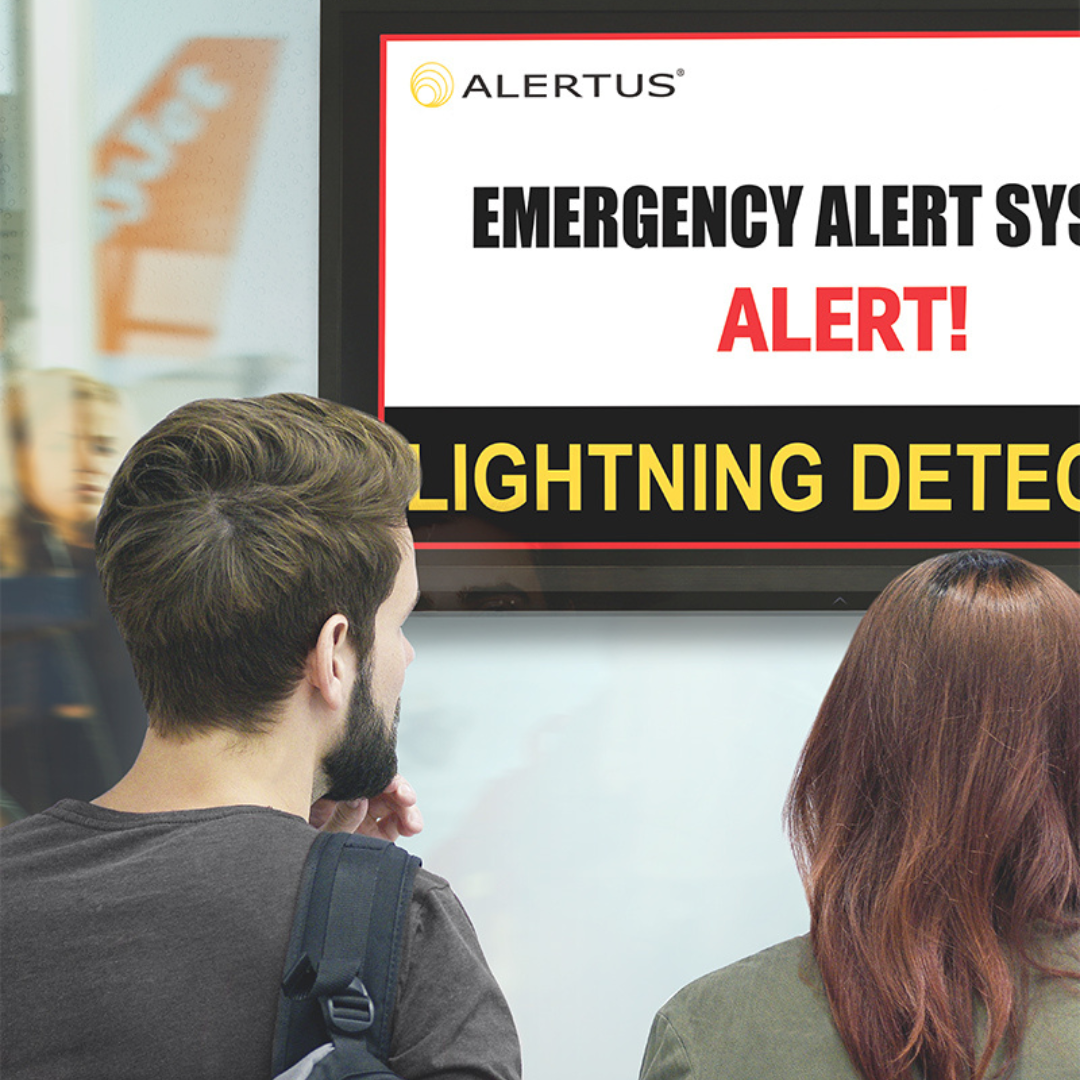When Lightning Strikes: Three Steps to Maintain Business Continuity and Promote Safety
By Kara Stamets, Content Marketing Specialist at Alertus Technologies
During a storm, you may be assembling essential products in a manufacturing facility, and the power goes out – a lightning bolt has just struck a tree causing heavy branches to fall on power lines nearby. The lights are out, the internet is down, and assembly lines come to a halt.
Business continuity is impacted when a power outage delays important work and results in potential income loss. Electricity is also needed to keep air conditioning and heating units running to keep employees comfortable, and it can sometimes be hours or days before power is restored. Not only does lightning cause business continuity issues, but it is also hazardous for those who work off-site or are traveling to and from work.
Below, we outline three key steps organizations can take while preparing for lightning storms that may cause power outages and harm.
1. Be Aware
It is critical to stay informed of daily and weekly weather forecasts to reduce the negative impacts of severe storms. The National Weather Service (NWS) provides up-to-the-minute weather updates, weather trends, and lightning safety tips and resources that are useful for all organizations and individuals.
The National Oceanic and Atmospheric Administration (NOAA) provides weather reports and radio forecasts that organizational leadership should check daily, and there are also services, such as Alertus' ThreatWatcher™, that monitor inclement weather 24/7 with premium meteorology data fed directly from AccuWeather, the NWS, and Environment Canada National Warnings and Alerts.
2. Develop a Lightning Safety Plan
After establishing awareness of weather forecasts, organizations should develop a Lightning Safety Plan that provides information on how and when to alert employees of lightning hazards and how to handle power outages.
Key questions to address:
What department will monitor and distribute severe weather and lightning alerts?
If the power goes out, do you have power backup sources ready?
Who will be in charge of restoring power?
How do you expect business to continue while the power is out?
How will you communicate thunder/lightning threats to your employees?
When should outdoor employees stop work, seek shelter, and resume work?
What locations are considered safe shelters?
3. Communicate Effectively with Mass Notification Systems and Integrations
After your organization has developed a Lightning Safety Plan, they should consider installing or enhancing a mass notification system (MNS) to alert and protect their employees around weather hazards.
Lightning detection systems are designed to detect electromagnetic vibrations radiated by lightning and can save lives by alerting the community of the presence of lightning in the area. Alertus’ Lightning Detection Integration provides advanced lightning detection information by detecting cloud-to-cloud, and cloud-to-ground lightning strikes. This software allows users to better plan for inclement weather and is a powerful integration into your mass notification system.
Indoor Alerting: When a storm is approaching your facility, you can take action with advanced notice from the weather services to alert your employees via warning systems such as PA Systems, Alert Beacons, Desktop Notifications, or Mobile Apps.
Outdoor Alerting: Employees working outdoors in open spaces, close to conductive materials, or near tall objects, are at higher risk for lightning strikes and should take warnings seriously. Mobile push notifications or outdoor speaker systems, such as Alertus’ High Power Speaker Array (HPSA), are effective means to alert workers.
By being prepared with regular weather updates, a Lightning Safety Plan, and an MNS, organizations have a greater chance of decreasing emergencies caused by lightning and can respond to power outages faster.



